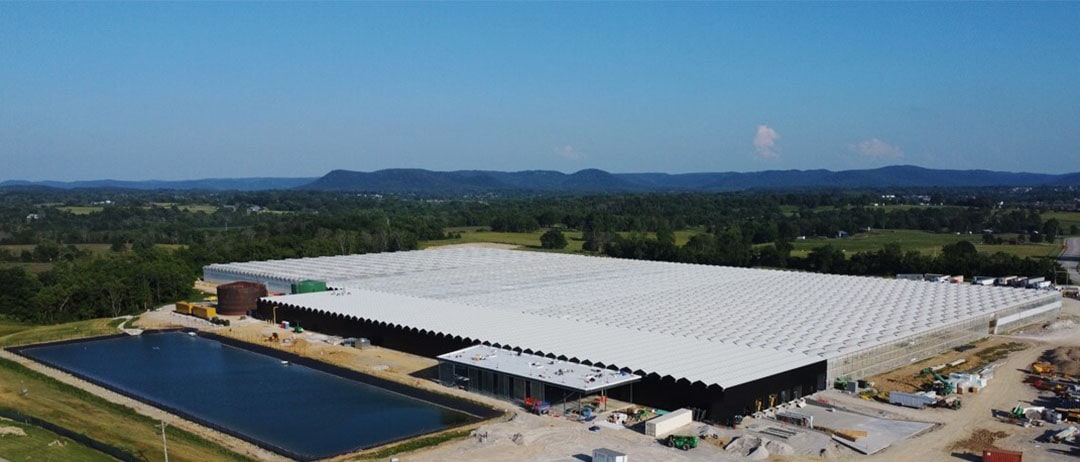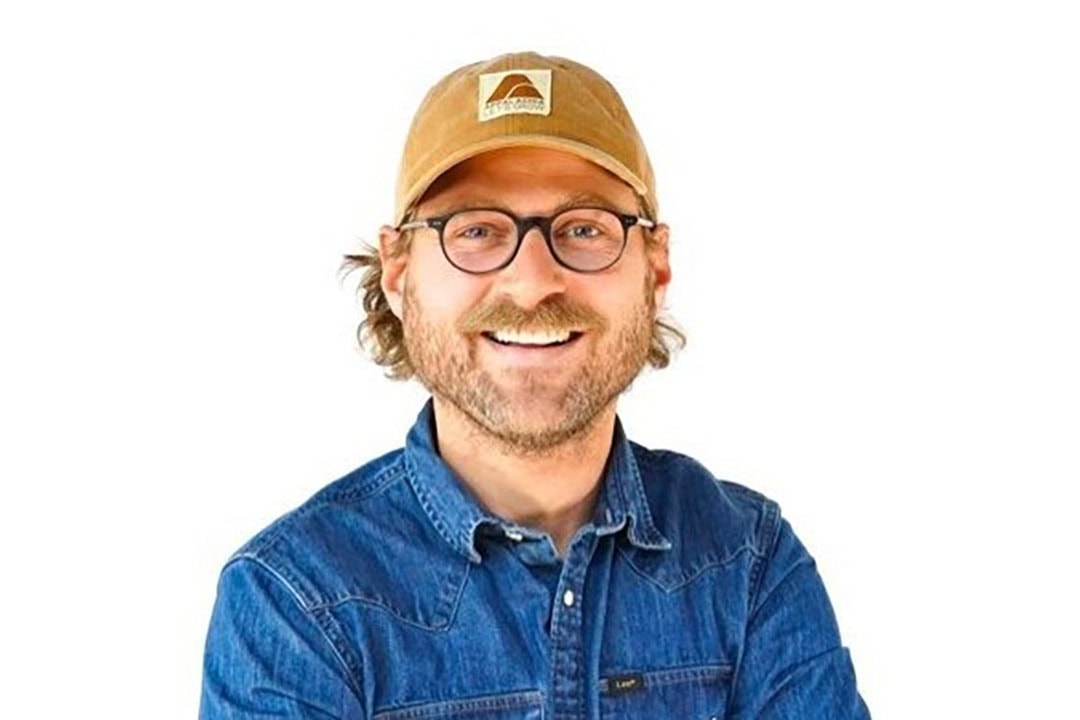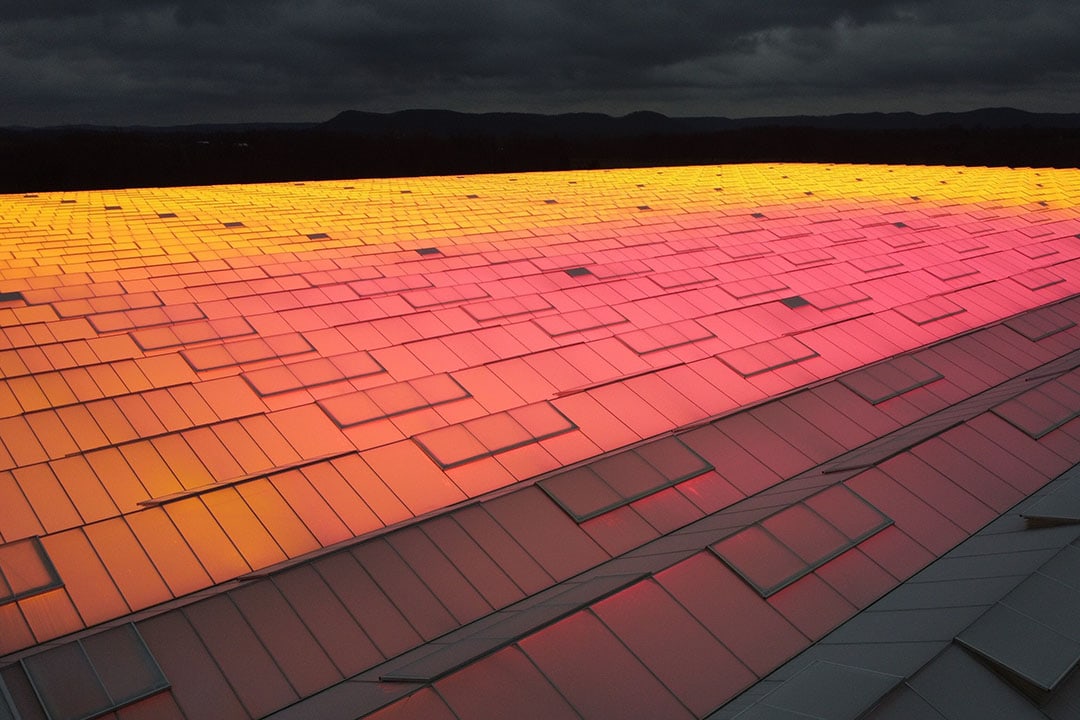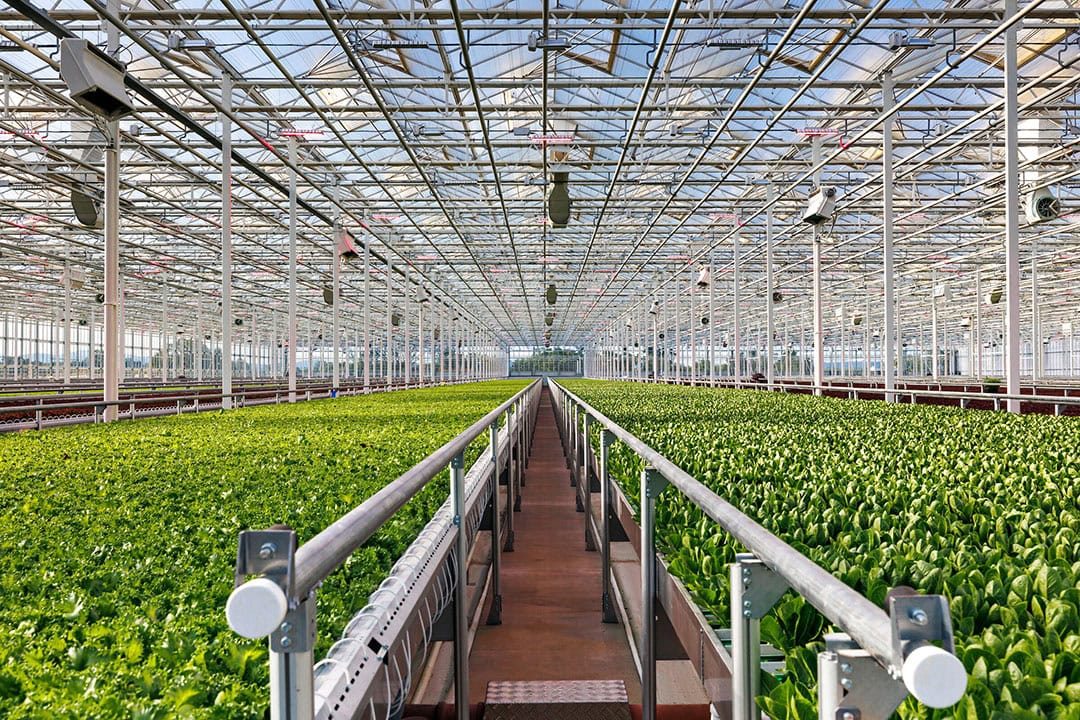AppHarvest CEO: “Our high-tech indoor farms are giant robots”

Indoor farming company AppHarvest is growing rapidly. CEO Jonathan Webb explains why large-scale indoor farms are the key to feeding the world’s rapidly growing population.
AppHarvest operates some of the world’s largest high-tech indoor farms in the United States with robotics and artificial intelligence. Recently the company announced it had completed calibration of a “touchless growing system” featuring autonomous harvesting for its new 15-acre Berea, Kentucky salad greens farm. Other farms AppHarvest operates are the 30-acre AppHarvest Somerset Farm, and the 60-acre flagship farm in Morehead, Kentucky.
Jonathan Webb is the founder and CEO of AppHarvest. He firmly believes indoor farming is the key to a more robust, climate-resilient, sustainable food system, which also provides new jobs where they are most needed.
When and how did you get personally involved in indoor farming?
“My background was in building large-scale solar development projects for the Unitd States Department of Defense, one of the country’s biggest energy consumers. While in Washington D.C., all the talk was about energy security. But an even more pressing issue no one seemed to be talking about was food security. Climate change is negatively impacting agriculture. In the U.S., areas that normally grow much of our food – the Southwest and California – are experiencing extreme weather events that make our food supply unstable. And, this isn’t just a U.S. problem, it’s a global one.
The United Nations predicts that in about 30 years – by 2050 – we’ll need to produce about 70% more food to feed a world population of nearly 10 billion people. That means we would need a second Planet Earth to have enough land and water to feed everyone. We have to grow much more with far fewer resources.
That’s why I founded AppHarvest – where we’re building and operating some of the world’s largest high-tech indoor farms. AppHarvest is a sustainable foods company that leverages the best of AgTech – sunshine, rainwater and up to 90% less water than open-field growing while producing yields up to 30 times that of traditional agriculture on the same amount of land without agricultural runoff. We believe that large-scale indoor farming is the key to feeding the world’s rapidly growing population.”
Text continues below image

Indoor farming and vertical farming are terms that are often used to say the same thing. Is there a difference between indoor farming and vertical farming?
“AppHarvest’s controlled environment agriculture (CEA) approach is different than black box or vertical farming. We grow at-scale leveraging sunshine and rainwater first then boosting with technology as needed. Our closed-loop irrigation system uses up to 90% less water than open-field farming and allows for precision dosing of nutrients, resulting in far less use of fertilizer than open-field agriculture while avoiding pollution from agricultural runoff. Although we do supplement the sunlight our plants receive with LED lighting, our plants require less energy than indoor warehouse farms because of our passive solar design. This is a key differentiator from vertical farming, which doesn’t use any passive solar.
Vertical farming tends to be on a smaller scale, with most vertical farms measuring in thousands of square feet versus acres and hyper-local with all artificial inputs for light and city water.”
Indoor farming/vertical farming initially focused on leafy greens. AppHarvest is now also growing strawberries and tomatoes. How difficult is that, compared to leafy greens?
“At our indoor farms, we’re growing tomatoes, salad greens and strawberries, rotating English cucumbers seasonally. For a plant, whether it be a tomato plant, or lettuce or strawberry, you’re not manipulating the plant itself. We’re manipulating the climate around it so that we’re giving that plant exactly what it needs, the amount of nutrients it needs, the amount of water it needs, the temperature and the light. We’re altering the environment, using AI to scan the plant to see if there’s pests or disease and using software and robotics to help operate the facility.”
Text continues below image

What other crops could be grown in an indoor facility?
“Theoretically, anything can be grown indoors in a controlled environment. However, each of our high-tech farms is designed to work best with a particular category of plant. We use a closed-loop irrigation system in our facilities that enables water savings of up to 90% compared to open-field farming and are best suited for growing crops such as salad greens, tomatoes and other vine crops, strawberries and cucumbers.”
How can you keep the costs low enough to be able to compete with traditionally grown crops?
“To keep costs down, you need cost efficiency per unit and that is achieved by growing at scale. It’s why we are building some of the world’s largest high-tech indoor farms. We’re building a system to get the most efficient result. Our two main ingredients for growing – sunshine and rainwater – are inflation proof. In our approach to Controlled-environment agriculture (CEA), we turn first to Mother Nature and boost with technology as needed. We grow in a glass structure so we can leverage sunshine, then, as needed, use LED lights that are 40% more efficient than traditional grow lights.
We leverage rainwater from our roof. Modeled after Venlo-style greenhouses in the Netherlands, we have thousands of little triangular roofs with gutters that go along the farm. We collect rainwater in all those gutters that goes into pipes and then into a massive retention pond. We only filter that water with sand and UV, no chemicals; sand to get the particulate matter out, UV to kill any bacteria. We pump that into the facility, we add nutrients, it goes to the plants. Once water enters our facility, the only way it leaves is as a fruit and vegetable. Our farms are also strategically located within a day’s drive of about 70% of the United States reducing transportation costs.”
Why is it important to increase agricultural productivity with indoor farming facilities and be less dependent on imports? Don’t we (most countries) import food because it’s cheap and readily available?
“The food supply chain is becoming more vulnerable as climate change continues to cause unpredictable growing conditions across the world ranging from mega-droughts to hurricanes while also experiencing major food recalls such as E. coli and listeria in lettuce. And here in the United States, we’re currently importing about two-thirds of our fruits and vegetables. We’ve seen how pandemics, forces of nature and political conflicts can shut down or delay those channels. We have to create a more robust, climate-resilient, sustainable food system now – one that provides jobs in the U.S. – in areas where they’re needed most.”
We can’t continue to grow fruits and vegetables, which mainly consist of water, in areas where there isn’t any water
It is often claimed that indoor farming could help solve issues like climate change. How? And how does that compare to for instance carbon sequestration, which is an increasing practice in traditional arable farming?
“Climate change and extreme weather events are disrupting the areas where we traditionally grow our domestic supply of fruits and vegetables. In the Southwest, the Colorado River and Lake Mead are drying up. California is experiencing long-term drought and wildfires. We can’t continue to grow fruits and vegetables, which mainly consist of water, in areas where there isn’t any water. We grow in a controlled environment leveraging sunshine and rainwater using a closed-loop system that is automated for temperature, humidity and lighting. We are able to use up to 90% less water than traditional open-field farming, precision dosing of nutrients means we are using far less fertilizer compared to outdoor farming and there’s no harmful ag runoff to pollute waterways or produce harmful algae blooms. The closed-loop system also aids in integrated pest management to avoid the use of harsh chemical pesticides. We use good bugs to take care of bad bugs as well as human scouts for early detection and prevention. Our energy-efficient LED grow lights reduces energy consumption by about 40% and our strategic location means we are within a day’s drive of nearly 70% of the U.S. population.”
Text continues below image

AppHarvest’s new farm in Berea uses a “touchless system”. How does that work?
“The “touchless system” at AppHarvest Berea is fully automated from substrate filling and seeding to harvesting, mixing and packaging. We grow in open troughs that advance through the entire system about every three to four weeks, depending on varietal. Once the troughs are filled and seeded, they move to the germination box for a day or two and then move into the growing bay until ready for harvesting. The troughs then move on a conveyor belt to the harvest room where it is autonomously cut and mixed. It’s then washed, dried and packed for shipment.”
What are the benefits of such a touchless system?
“The touchless growing system has many advantages, including food safety concerns, quality control and taste management. How often in the past couple of years have we seen lettuce recalls due to listeria or E. coli? Salad greens grown in a CEA facility aren’t susceptible to the same contaminates open-field growers experience. The adaptive spacing design of the troughs in the touchless growing system allows the plants space to access the light they need leading to better quality and taste as well as minimizing any potential pest exposure.”
How many people will be working in the Berea there? What will they do?
“We don’t break down employee numbers by farm as we are able to leverage skills and flex labor across the four-farm network based on crop need and the grow cycle. We’re a certified B Corp and public benefit corporation providing good paying jobs in agriculture in Central Appalachia. Since the beginning of 2022, we have grown from about 500 employees to about 700 and expect to be around 800 employees by year-end. We also expect to hire more as we ramp up production at our Richmond farm next year.
Precision agriculture of this type can allow growers to shift from limited-visibility tools to data-driven decisions
In indoor farming, AI and robotics are taking over a grower’s role. But don’t we need more farmers and growers who understand agriculture, nature and crops, instead of less?
“A grower’s role is critical in CEA. We consider our high-tech farms to be giant robots that help us make data-driven decisions and our growers are the ones we depend on to assess and act on that information to produce fruits and vegetables that meet customer demands. Crop work must be tracked closely throughout the growing and harvesting cycles, and the crop team needs to be coached to get the crops what they need, when they need it to thrive. We’re working to leverage data and technology to apply relevant insights to become more resource-efficient in labor, water, energy and nutrient use. Precision agriculture of this type can allow growers to shift from limited-visibility tools to data-driven decisions using advanced IT tools to ensure a crop plan is precisely implemented.”
Text continues below image

How do we protect the digital infrastructure of indoor farming against digital threats, hackers and ‘hybrid warfare’?
“Our food supply is as important to national security as energy, water, communications and emergency services. At AppHarvest we treat our farms as critical infrastructure, and we protect them accordingly.”
Will we see some sort of ‘consolidation’ in indoor farming/vertical farming, where a number of large companies with sufficient scale to be competitive will remain?
“As with any industry where at-scale development is capital intensive, there is always a possibility for consolidation. The AppHarvest team sees our journey to create a resilient food system taking decades. We’re at the beginning and working hard to create shareholder value now that will still be there in decades two and three. What really matters is companies like AppHarvest that are building solutions in response to a global problem with serious environmental and societal implications.”
Indoor farming and vertical farming companies seem to be active mostly in the United States. Why is that?
The United States is actually behind when it comes to indoor farming. Europe, a pioneer in the industry, is estimated to have nearly 520,000 acres of CEA production compared to an estimated 6,000 acres in the U.S., so we have a lot of work to do to catch up. Major food retailers have demonstrated increasing interest in high-tech indoor farms for their ability to de-risk fruit and vegetable production with a more climate-resilient, more sustainable year-round growing solution that uses far fewer resources.”
CEA is the third wave of sustainable infrastructure following renewable energy and electric vehicles
What in your view is needed to enable indoor farming and vertical farming to really take off?
“We believe CEA is the third wave of sustainable infrastructure following renewable energy and electric vehicles. We have to create awareness to secure funding and policy support to expand and sustain the industry. Solar and other forms of renewable energy can be game changers for indoor farming. Our challenge in Kentucky is that we’re ready before the grid is, so we’re working with our utility company to green the grid by pushing for changes in the type of electricity that can be purchased. This benefits not just us, but the whole region.
As we work to build an AgTech ecosystem in Central Appalachia, education and preparing the next generation of farmers is critical. The AppHarvest Foundation has built an AgTech Education Program for high school students combining traditional agriculture classes with a STEM-based curriculum growing produce in high-tech hydroponic classrooms retrofitted from shipping containers. This program prepares students for jobs in modern agriculture by providing them the opportunity to grow their own food and learn about all stages of farming from planting to harvesting to marketing and selling their product in a hands-on, real-world environment. We recently launched the twelfth farm classroom in Eastern Kentucky and hope the program can serve as a model nationally.”



